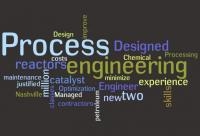|
|

Critical Pressure Of A Mixture
Started by Stefano, Feb 02 2012 03:00 AM
6 replies to this topic
Share this topic:
#1

Posted 02 February 2012 - 03:00 AM
Hi everybody, this is my first Topic in the forum.
I need to calculate the critical pressure and the vapour pressure of a mixture of water (93%), ammine, H2SO4 and SO2. Normally Hysys performs this kind of calculations very well however, in this case, the thermodynamic package doesn’t work with all the listed components.
Is there an alternative method to calculate that critical values?
I need to calculate the critical pressure and the vapour pressure of a mixture of water (93%), ammine, H2SO4 and SO2. Normally Hysys performs this kind of calculations very well however, in this case, the thermodynamic package doesn’t work with all the listed components.
Is there an alternative method to calculate that critical values?
#2

Posted 02 February 2012 - 04:40 AM
Prosim Plus will work with this type of system
#3

Posted 02 February 2012 - 08:43 AM
I'm downloadind the free version of Prosim Plus and I'll let you know. Thank you very much
#4

Posted 03 February 2012 - 06:45 AM
I tried to perform the calculation with the software indicated: unfortunately it doesn't work because of the lack of information in the "freeware version" database.
I solved my issue with Aspen Hysys 7.2 using the Hypoteticals Components and the Peng Robinson package ("Critical Properties" tool). The aqueous mixture is characterized by water (93.89% mol), SO2 (0.21 % mol), H2SO4 (2.22% mol) and Ammine (3.68% mol). With the NRTL package I extracted the properties necessary to create the Hypo components for the H2SO4 and the Ammine; after this I used the Critical Properties tool for the same stream simulated with Peng Robinson package.
The calculation was necessary for calculate some control valves, so the accuracy of the result is not so significant: in my knowledge (confirmed by a control valve vendor), the higher the critical pressure, more critical is the value. In my case the critical pressure of the mixture is about Pc=359 barg while the water critical pressure is about Pc=219 barg.
I solved my issue with Aspen Hysys 7.2 using the Hypoteticals Components and the Peng Robinson package ("Critical Properties" tool). The aqueous mixture is characterized by water (93.89% mol), SO2 (0.21 % mol), H2SO4 (2.22% mol) and Ammine (3.68% mol). With the NRTL package I extracted the properties necessary to create the Hypo components for the H2SO4 and the Ammine; after this I used the Critical Properties tool for the same stream simulated with Peng Robinson package.
The calculation was necessary for calculate some control valves, so the accuracy of the result is not so significant: in my knowledge (confirmed by a control valve vendor), the higher the critical pressure, more critical is the value. In my case the critical pressure of the mixture is about Pc=359 barg while the water critical pressure is about Pc=219 barg.
#5

Posted 03 February 2012 - 08:50 AM
I would be surprised if you get a decent value for true critical point for a mixture with Water + H2SO4 + Amine + ... utilizing as model Peng Robinson with vdW mixing rules, you can try complex mixing rules as Huron Vidal or Wong Sandler but results are uncertain in terms of accuracy....
For your reference I attach the phase envelope of the mixture
Water 0.9389
Sulfuric Acid 0.0222
Sulfur Dioxide 0.0021
Diethylamine 0.0368
calculated with Prode Properties, model Peng-Robinson-NRTL with Wong Sandler mixing rules, you may find the software here
http://www.prode.com...aseenvelope.htm
as said even with complex mixing rules and BIPS for Water-Sulfuric Acdid and Water-Diethylamine the results are uncertain, but the calculated value for critical pressure is far (30% difference) from that which you calculated with HYSYS...
Finally, if I remember correctly you don't need the true critical pressure in Masoneilan / ISA formulation to identify the amount of flashing liquid, you need the so called pseudoCritical pressure, that is the molar average of critical pressures of the different components, you can find easily critical pressures of different components in your simulator database.
In my copy of Prode Properties these values are
Water 220.64 Bar.a
SO2 78.841 Bar.a
H2SO4 64 Bar.a
....
then Pseudocritical pressure will be 0.9389*220.64+0.0021*78.841+0.0222*64...
Keep in mind that Masoneilan formulation (now ISA) was originally conceived for pure fluids where the change of state happens at saturation temperature, for wide boiling mixtures things are more complex and you need to simulate the valve operation with a proper thermodynamic model to evaluate flashing.
For your reference I attach the phase envelope of the mixture
Water 0.9389
Sulfuric Acid 0.0222
Sulfur Dioxide 0.0021
Diethylamine 0.0368
calculated with Prode Properties, model Peng-Robinson-NRTL with Wong Sandler mixing rules, you may find the software here
http://www.prode.com...aseenvelope.htm
as said even with complex mixing rules and BIPS for Water-Sulfuric Acdid and Water-Diethylamine the results are uncertain, but the calculated value for critical pressure is far (30% difference) from that which you calculated with HYSYS...
Finally, if I remember correctly you don't need the true critical pressure in Masoneilan / ISA formulation to identify the amount of flashing liquid, you need the so called pseudoCritical pressure, that is the molar average of critical pressures of the different components, you can find easily critical pressures of different components in your simulator database.
In my copy of Prode Properties these values are
Water 220.64 Bar.a
SO2 78.841 Bar.a
H2SO4 64 Bar.a
....
then Pseudocritical pressure will be 0.9389*220.64+0.0021*78.841+0.0222*64...
Keep in mind that Masoneilan formulation (now ISA) was originally conceived for pure fluids where the change of state happens at saturation temperature, for wide boiling mixtures things are more complex and you need to simulate the valve operation with a proper thermodynamic model to evaluate flashing.
Attached Files
Edited by PaoloPemi, 03 February 2012 - 09:28 AM.
#6

Posted 03 February 2012 - 11:29 AM
Hi PaoloPemi, first of all thank you very much for your valuable contribution. I can confirm the critical pressures of the single components of the mixture you listed above.
Right now I'm trying to perform the calculation by hand, using a formula from "The properties of gases&liquids" 4th edition [Reid-Prausnitz-Poling]. At the moment I only calculated the Critical Temperature in order to compare the results obtained with Hysys, and the results are quite close (654K hand calculation Vs 666K Hysys Vs 680K Prode Properties).
Regarding the second part of your answer, referring to "Emerson - Control valve handbook" Chapter 5, Pc is defined as "Absolute thermodynamic critical pressure" and it is necessary in order to calculate the maximum flowrate Qmax, and the maximum Delta P. So, such Pc is the True Pc or is the Pseudo Pc?
Right now I'm trying to perform the calculation by hand, using a formula from "The properties of gases&liquids" 4th edition [Reid-Prausnitz-Poling]. At the moment I only calculated the Critical Temperature in order to compare the results obtained with Hysys, and the results are quite close (654K hand calculation Vs 666K Hysys Vs 680K Prode Properties).
Regarding the second part of your answer, referring to "Emerson - Control valve handbook" Chapter 5, Pc is defined as "Absolute thermodynamic critical pressure" and it is necessary in order to calculate the maximum flowrate Qmax, and the maximum Delta P. So, such Pc is the True Pc or is the Pseudo Pc?
#7

Posted 04 February 2012 - 04:56 AM
the pseudocritical temperature and pressure which can be found using W.B.Kay's rule (mentioned in "The properties of gases & liquids") will give values close to those of water (molar fraction 0.9389), the original value of 359 barg which you calculated is, in my opinion, uncorrect, still it is not easy to calculate true critical properties for this mixture as shown in my previous post (but I believe that values calculated by Prode Properties are quite reasonable).
If I remember correctly (I have not my documentation available) the original Masoneilan formulation did not mention the case of mixtures, it is questionable to use true critical values of mixtures, some authors did suggest to use for mixtures pseudocritical values and I have reports from manufacturers which do use that method.
As said the correct way to proceed would be to model the valve with a constant energy flash operation.
If I remember correctly (I have not my documentation available) the original Masoneilan formulation did not mention the case of mixtures, it is questionable to use true critical values of mixtures, some authors did suggest to use for mixtures pseudocritical values and I have reports from manufacturers which do use that method.
As said the correct way to proceed would be to model the valve with a constant energy flash operation.
Similar Topics
Steam Pressure In Heat ExchangerStarted by Guest_mvanrijnbach_* , 15 Apr 2025 |
|

|
||
Valve Cavity - Pressure Relief ValveStarted by Guest_CS10_* , 20 Feb 2025 |
|

|
||
Pressure Of An Isolated Flow In PipeStarted by Guest_phoroogh_* , 30 Jan 2025 |
|

|
||
Maximum Allowable Accumulated PressureStarted by Guest_mahmooddalvi09_* , 30 Jan 2025 |
|

|
||
Screw Compressor Suction Pressure DeterminationStarted by Guest_Deicide Dunkelheit_* , 22 Jan 2025 |
|

|

 FB
FB









